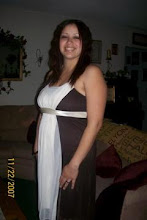Day of the Dead

More than 500 years ago, when the Spanish Conquistadors landed in what is now Mexico, they encountered natives practicing a ritual that seemed to mock death. It was a ritual the indigenous people had been practicing at least 3,000 years. A ritual the Spaniards would try unsuccessfully to eradicate. A ritual known today as Día de los Muertos, or Day of the Dead.
Today, people don wooden skull masks called calacas and dance in honor of their deceased relatives. The wooden skulls are also placed on altars that are dedicated to the dead. Sugar skulls, made with the names of the dead person on the forehead, are eaten by a relative or friend, according to Mary J. Adrade, who has written three books on the ritual.
The Aztecs and other Meso-American civilizations kept skulls as trophies and displayed them during the ritual. The skulls were used to symbolize death and rebirth.
The skulls were used to honor the dead, whom the Aztecs and other Meso-American civilizations believed came back to visit during the month long ritual.
Unlike the Spaniards, who viewed death as the end of life, the natives viewed it as the continuation of life. Instead of fearing death, they embraced it. To them, life was a dream and only in death did they become truly awake.
However, the Spaniards considered the ritual to be sacrilegious. They perceived the indigenous people to be barbaric and pagan. In their attempts to convert them to Catholicism, the Spaniards tried to kill the ritual. But like the old Aztec spirits, the ritual refused to die. To make the ritual more Christian, the Spaniards moved it so it coincided with All Saints' Day and All Souls' Day (Nov. 1 and 2), which is when it is celebrated today.
Previously it fell on the ninth month of the Aztec Solar Calendar, approximately the beginning of August, and was celebrated for the entire month. Festivities were presided over by the goddess Mictecacihuatl. The goddess, known as "Lady of the Dead," was believed to have died at birth, Andrade said.
Today, Day of the Dead is celebrated in Mexico and in certain parts of the United States and Central America. "It's celebrated different depending on where you go," Gonzalez said.
In rural Mexico, people visit the cemetery where their loved ones are buried. They decorate gravesites with marigold flowers and candles. They bring toys for dead children and bottles of tequila to adults. They sit on picnic blankets next to gravesites and eat the favorite food of their loved ones.
The above was taken from a story done on this event. As for myself, I do not practice this celebration but did feel the need in sharing. I do remember those I have lost often, and if I did make a sugar skull it would be in remembrance of my Grandmother Lala. (Story to be told in the near future.)


3 Comments:
At 9:43 AM, Chely said…
Chely said…
This is a very important day for me. Specialy now that my dad is gone.
I will be honoring him, my Tia Juanita, Tia Lupe, Abuelitos,my lovely neighbors (from 21st Street) Pearl, Edna & Mother Jean.
I will also include (although this is not traditional) my little Chihuahua "TOTO". She was a big part of my family for 15 years and will always hold a special place in my heart:)
May they all "Rest in Peace".
At 6:58 AM, Jose said…
Jose said…
Amen to that!
At 10:35 AM, Chely said…
Chely said…
Ms. Lori:
I think it's time for a new Post!
Post a Comment
<< Home